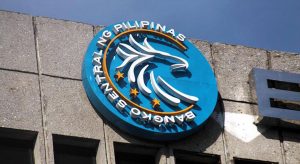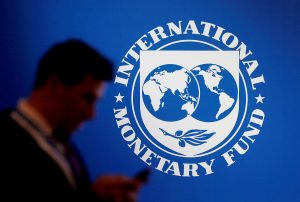PHL central bank may need to continue rate hikes — IMF

By Keisha B. Ta-asan, Reporter
THE BANGKO Sentral ng Pilipinas (BSP) may have to continue raising interest rates in tandem with the US Federal Reserve amid higher inflation and the peso depreciation, an International Monetary Fund (IMF) official said.
“Depending on what the Fed does, depending on how we see the interest rate differential between the US dollar and the Philippine peso, depending on how we see inflation developments in the Philippines. I think the BSP will take these issues into consideration and decide on the next move,” IMF Mission Chief for the Philippines Cheng Hoon Lim told BusinessWorld in an Oct. 13 interview.
“If inflation pressures persist in the Philippines and if you know, there’s a further widening of interest rate differential there, the BSP may have to continue to hike interest rates, but they’re going to have to see what incoming data tells them,” she added.
The US Federal Reserve is widely expected to hike rates at its Nov. 1-2 meeting, as inflation remains elevated.
The Monetary Board has raised benchmark interest rates by a total of 225 basis points (bps) so far this year. Its next policy-setting meeting is scheduled on Nov. 17.
Philippine headline inflation quickened to 6.9% year on year in September, exceeding the central bank’s 2-4 target band for a six straight month. The average inflation rate for the year so far is at 5.1%, still below the BSP’s full-year forecast of 5.6%.
“The strength of the US dollar has led to capital outflows from many countries and that has caused currencies in Asia and elsewhere in the world to depreciate,” Ms. Lim said.
The local unit closed at P58.935 per dollar on Friday, gaining 6.5 centavos from its record-low finish of P59 on Thursday, based on Bankers Association of the Philippines data.
Year to date, the peso has depreciated by 15.55% or P7.935 from its P51 close on Dec. 31, 2021.
Asked if the BSP has room to raise interest rates further, Ms. Lim said its monetary policy stance is still accommodative.
“(Policy) goes back up to what economists call the neutral rate where we can get full employment without inflation rising. So as long as they are normalizing, we do not see the growth for next year to be jeopardized, Ms. Lim said.
“They can raise interest rates while still preserving economic recovery,” she added.
On Friday, BSP Governor Felipe M. Medalla said the central bank will consider a 75-bp hike in November to keep the peso from further weakening and contributing to inflationary pressures.
“The argument for not responding point-by-point is that our inflation rate is lower, but the argument for doing something bolder is that the question of the currency also has to be addressed,” Mr. Medalla told Bloomberg Television.
GROWTHThe IMF expects the Philippine economy to expand by 6.5% this year, lower than its previous estimate of 6.7%, and matches the lower end of the government’s 6.5-7.5% goal.
“We expect the Philippine economy will meet the government’s growth target for this year,” Ms. Lim said, adding that private consumption and investment will be the main drivers of growth in 2022.
The economy expanded by 7.8% in the first half of 2022.
However, Ms. Lim said the growth outlook remained clouded by uncertainties caused by the slowdown in major trading partners such as the United States and China, and tightening monetary policy.
In its latest World Economic Outlook (WEO) the IMF slashed the global gross domestic product (GDP) growth outlook to 3.2% from 3.6% this year and to 2.9% from 3.6% for 2023.
“In line with this, we are therefore projecting a moderation for growth in 2023 to 5%. Obviously if downside risks materialize growth could be slower than that,” Ms. Lim said.
However, a global recession may also lead to inflation easing next year, she said.
“If there is a global recession, commodity prices will likely also come down more than we project and that would be helpful in the sense of imported inflation for the Philippines. Growth may slow down a little bit, but inflation will also moderate,” she added.
The IMF sees Philippine inflation rising to 5.3% this year before declining to 4.3% in 2023.
FISCAL CONSOLIDATIONMs. Lim said the Philippine government is “doing the right thing” in its fiscal consolidation efforts.
“We want our fiscal and monetary policy to work together in the current juncture when inflation is high,” she said.
The Philippines is planning to undertake fiscal consolidation to ensure the sustainability of public debt. As of end June, the debt-to-GDP ratio stood at 62.1%, beyond the 60% threshold prescribed by multilateral lenders for developing economies.
The Marcos administration is aiming to bring down the debt-to-GDP ratio to 52.5% by 2028.
“In the longer-term perspective, we would like to see greater revenue mobilization and cost-effective government spending,” Ms. Lim said, adding that the country needs to have more funds for infrastructure and other social and development objectives.
“A concrete medium-term fiscal strategy on how the Philippines can raise additional revenues would be very helpful,” she said.
When asked how can the government narrow down the country’s fiscal deficit, Ms. Lim said it is important to make sure that the pace of fiscal consolidation is right.
“Now, if there’s a global recession and downside risks materialize, then we need to rethink the pace of fiscal consolidation,” she said.
“But that is a downside risk scenario and if that happens, the pace of fiscal consolidation should be slower.”




